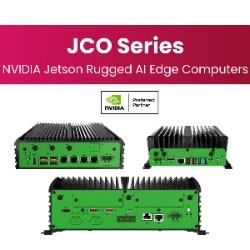4 of the Most Important Safety Practices in Automated Factories
Keys to Building More Autonomous Systems Into Manufacturing
New Solutions for Materials Manufacturing Reduce Environmental Impact in Construction
Variable speed drives: the dark side
Copper Shortages Present New Manufacturing Challenges in 2022
It's Not Just Consumers Who Prefer To Buy Online
The Future of Supply Chains Post-Pandemic
Hyperautomation - what's the hype?
Improving Recruiting Efforts to Fill Manufacturing Roles
How to Identify & Avoid Greenwashing in Manufacturing
Michigan Economic Development Corp. (MEDC) Starts Preparing Companies for the Future of Manufacturing
2022 - The Year of Automation
6 Emerging Solutions for Industrial Noise Control
How Manufacturers Can Deal With Supply Chain Issues and Still Grow
Minimizing Supply Chain Losses From Climate Change
Records 316 to 330 of 1150
First | Previous | Next | Last
Featured Product

